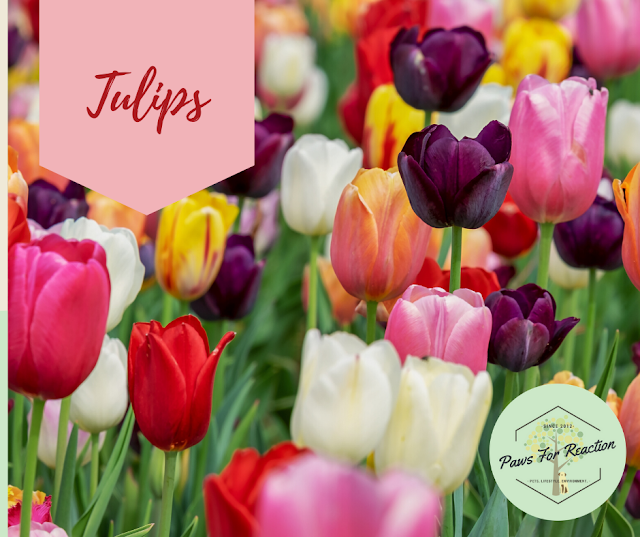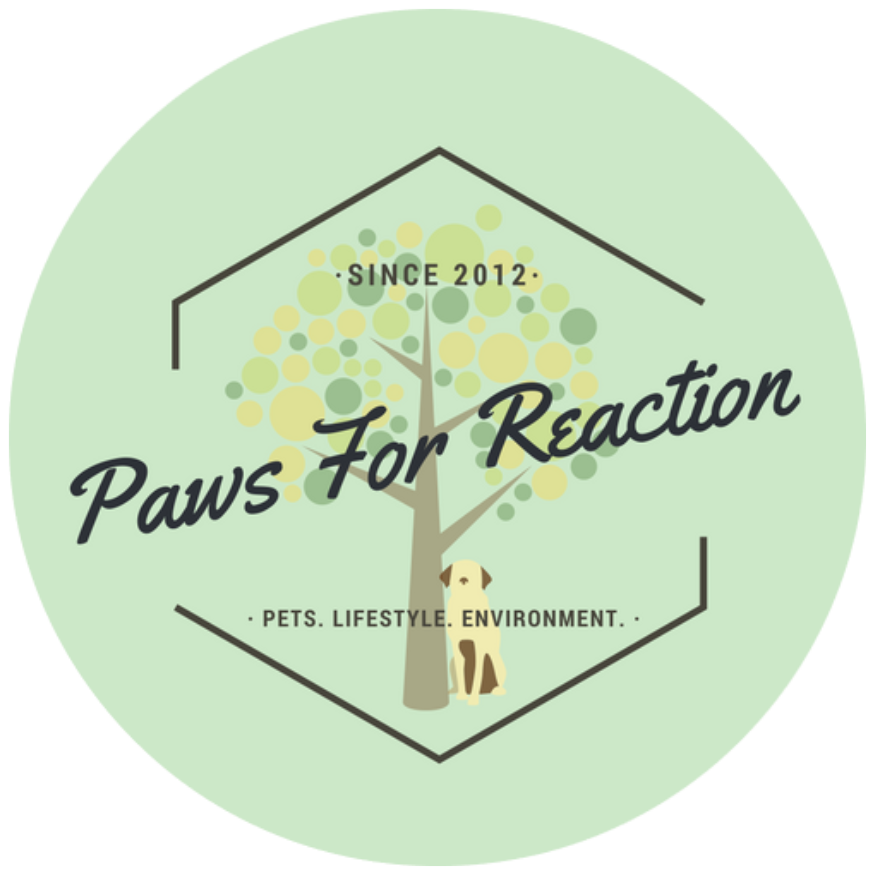Spring safety: 10 common flowers that are toxic to dogs
It seems as though the warmer weather is finally here to stay. The sun is shining. Beautiful spring flowers are blooming. Your dog explores the world with its nose. Unfortunately, a dog's nose can lead them to dangerous things. Flowers that are beautiful to us can be toxic to your dog. These are 10 common flowers that are toxic to dogs. If your dog ingests any of these plants, call your veterinarian immediately.
Tulips
Tulips are extremely common- especially here in Ontario. Ottawa even hosts the Canadian Tulip Festival every spring! Tulips are beautiful but can make your dog very sick. Ingestion of tulips can cause vomiting, loss of appetite, depression, diarrhea, and drooling.
Hyacinth
Water hyacinth is a free-floating aquatic plant that spreads rapidly. It's considered an invasive plant species in Ontario. If your dog ingests Hyacinth it can suffer from vomiting, diarrhea, depression, and tremors.
Daffodil
Daffodils are everywhere in Ontario because it commonly spreads into the wild. It's also a very common flower planted in people's home gardens. It's not commonly known that if your dog ingests Daffodil, it can suffer from severe gastrointestinal issues, seizures and convulsions, low blood pressure, and tremors. Some types of Daffodil can even cause cardiac arrhythmias that can result in death.
Azalea
There are over 1000 species of Rhododendron, which is the flower family that the Azalea belongs to. Only two are common in Ontario. These flowers can be deadly for your dog. If your dog ingests Azalea, it can suffer from vomiting, diarrhea, and weakness. More severe symptoms include coma, hypotension, and cardiovascular collapse that can result in death.
Morning Glory
Morning Glory is a flowering, climbing vine that's name suits it very well. The purple flowers open in the morning sun and close in the late afternoon. It's quite common in Ontario. If a large number of seeds are ingested, it can cause diarrhea and hallucinations.
Oleander
Oleander is a flowering shrub that does well in warmer climates. In Ontario, some people grow it inside the home, which can put it in close proximity to your dog. If ingested it can cause drooling, vomiting, diarrhea, tremors, weakness, abnormal heart rhythm or decrease heart rate.
Wisteria
Wisteria is a Japanese climbing vine that is actually part of the pea family. It has long, cascading purple flowers. It does best in Southern Ontario where the climate tends to be warmer. If ingested by your dog it can cause vomiting and diarrhea (sometimes with blood present) and depression.
Yarrow
I see Yarrow all the time when I'm hiking with my dogs. It grows wild in Ontario. It's a delicate-looking perennial that spreads fast. If ingested by your dog it can cause discomfort, vomiting, diarrhea, excessive drooling, and anorexia.
Buttercups
Another very common wildflower in Ontario is the Buttercup. Do you remember holding these up to your chin when you were a child? Ingestion of Buttercups can cause gastric upset, weakness, and can cause your dog to be wobbly and unsteady on its feet.
Chrysanthemums
That's a mouthful! These flowers are also called daisies or mums, but not all species are toxic to dogs. This purple kind, often grown in Ontario gardens or potted inside the home, is toxic to your dog. If your dog gets a mouthful of this flower, it can suffer from diarrhea, vomiting, hypersalivation, and skin concerns (dermatitis).
What should I do if my dog ingested a toxic plant or flower?
Accidents happen. If your dog accidentally ingests a toxic plant or flower, call your veterinarian immediately. If your animal hospital is closed, contact the closest emergency animal hospital in your area. Never induce vomiting on your own without the guidance of a licensed veterinarian. 'At home remedies' to induce vomiting can be hard on your dog- and sometimes the remedy itself is toxic. You can call the Pet Poison Helpline for advice on toxins. It's a 24/7 service that can be reached at 1-855-764-7661. Keep in mind there may be a fee to use this service.
What other plants and flowers are toxic to my dog?
The Pet Poison Helpline website has an online list of Common Poisons. The list contains a lot of items but can be searched by category, which allows you to filter out things. Use this list to learn about other plants, flowers, and garden items that may pose a risk to your dog.
SHARE THIS POST to raise awareness and help protect dogs from springtime hazards!
Like Paws for Reaction on Facebook
Follow @PawsForReaction on Twitter
Follow my blog and subscribe in the sidebar >>
It seems as though the warmer weather is finally here to stay. The sun is shining. Beautiful spring flowers are blooming. Your dog explores the world with its nose. Unfortunately, a dog's nose can lead them to dangerous things. Flowers that are beautiful to us can be toxic to your dog. These are 10 common flowers that are toxic to dogs. If your dog ingests any of these plants, call your veterinarian immediately.
Tulips
Tulips are extremely common- especially here in Ontario. Ottawa even hosts the Canadian Tulip Festival every spring! Tulips are beautiful but can make your dog very sick. Ingestion of tulips can cause vomiting, loss of appetite, depression, diarrhea, and drooling.
Hyacinth
Water hyacinth is a free-floating aquatic plant that spreads rapidly. It's considered an invasive plant species in Ontario. If your dog ingests Hyacinth it can suffer from vomiting, diarrhea, depression, and tremors.
Daffodil
Daffodils are everywhere in Ontario because it commonly spreads into the wild. It's also a very common flower planted in people's home gardens. It's not commonly known that if your dog ingests Daffodil, it can suffer from severe gastrointestinal issues, seizures and convulsions, low blood pressure, and tremors. Some types of Daffodil can even cause cardiac arrhythmias that can result in death.
Azalea
There are over 1000 species of Rhododendron, which is the flower family that the Azalea belongs to. Only two are common in Ontario. These flowers can be deadly for your dog. If your dog ingests Azalea, it can suffer from vomiting, diarrhea, and weakness. More severe symptoms include coma, hypotension, and cardiovascular collapse that can result in death.
Morning Glory
Morning Glory is a flowering, climbing vine that's name suits it very well. The purple flowers open in the morning sun and close in the late afternoon. It's quite common in Ontario. If a large number of seeds are ingested, it can cause diarrhea and hallucinations.
Oleander
Oleander is a flowering shrub that does well in warmer climates. In Ontario, some people grow it inside the home, which can put it in close proximity to your dog. If ingested it can cause drooling, vomiting, diarrhea, tremors, weakness, abnormal heart rhythm or decrease heart rate.
Wisteria
Wisteria is a Japanese climbing vine that is actually part of the pea family. It has long, cascading purple flowers. It does best in Southern Ontario where the climate tends to be warmer. If ingested by your dog it can cause vomiting and diarrhea (sometimes with blood present) and depression.
Yarrow
I see Yarrow all the time when I'm hiking with my dogs. It grows wild in Ontario. It's a delicate-looking perennial that spreads fast. If ingested by your dog it can cause discomfort, vomiting, diarrhea, excessive drooling, and anorexia.
Buttercups
Another very common wildflower in Ontario is the Buttercup. Do you remember holding these up to your chin when you were a child? Ingestion of Buttercups can cause gastric upset, weakness, and can cause your dog to be wobbly and unsteady on its feet.
Chrysanthemums
That's a mouthful! These flowers are also called daisies or mums, but not all species are toxic to dogs. This purple kind, often grown in Ontario gardens or potted inside the home, is toxic to your dog. If your dog gets a mouthful of this flower, it can suffer from diarrhea, vomiting, hypersalivation, and skin concerns (dermatitis).
What should I do if my dog ingested a toxic plant or flower?
Accidents happen. If your dog accidentally ingests a toxic plant or flower, call your veterinarian immediately. If your animal hospital is closed, contact the closest emergency animal hospital in your area. Never induce vomiting on your own without the guidance of a licensed veterinarian. 'At home remedies' to induce vomiting can be hard on your dog- and sometimes the remedy itself is toxic. You can call the Pet Poison Helpline for advice on toxins. It's a 24/7 service that can be reached at 1-855-764-7661. Keep in mind there may be a fee to use this service.
What other plants and flowers are toxic to my dog?
The Pet Poison Helpline website has an online list of Common Poisons. The list contains a lot of items but can be searched by category, which allows you to filter out things. Use this list to learn about other plants, flowers, and garden items that may pose a risk to your dog.
SHARE THIS POST to raise awareness and help protect dogs from springtime hazards!
Give me a high paw and follow Paws For Reaction on Pinterest
Like Paws for Reaction on Facebook
Follow @PawsForReaction on Twitter
Follow my blog and subscribe in the sidebar >>
canine
dog
dog toxins
dogs
flowers
flowers toxic to dogs
Ontario
Ontario flowers
pet poison
Pet Poison Helpline
pets
plants toxic to dogs
poison control
spring
spring flowers
toxins
veterinary
































0 Comentarios